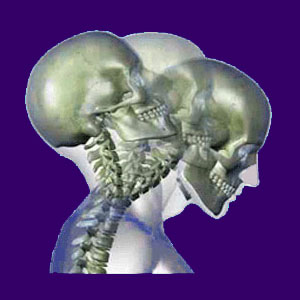
There are many possible neck pain causes, both structural and non-anatomically induced. The vast majority of neck pain syndromes are blamed on some abnormality in the cervical spinal anatomy, although these theories often turn out to be unenlightened and incorrect.
Many soft tissue pathologies can also be responsible for enacting severe, chronic neck pain and these conditions may not respond to traditional medical practices. There is a statistical fifty/fifty split between patients who blame the pain on a known or perceived neck injury and those who simply have pain, but never hurt their cervical spines.
This commentary investigates the variety of possible causative conditions that are most often cited as being direct causes or contributors to severe acute or chronic neck pain symptoms.
Degenerative Structural Neck Pain Causes
The cervical spine is the second most common region to experience noticeable and significant spinal degeneration, including the various manifestations of spinal osteoarthritis.
The neck is the most common area to experience degenerative spinal stenosis, typically due to a build-up of osteophyte material inside the central spinal canal.
The neck is also the site of many herniated discs, particularly at the C5/C6 and C6/C7 intervertebral levels. Furthermore, desiccation of the intervertebral spacers is normal, with most adults suffering a significant to extreme loss of disc mass and hydration between C4 and T1.
Many patients typically also demonstrate a reduction or complete loss of the typical lordotic spinal curvature in conjunction with a neck pain syndrome. While often theorized to be the source of pain, this loss of curvature is instead usually a result of muscular contractions that are enacted by the pain.
While any of these anatomical issues has the potential to cause neck pain, most are normal and even universal in the adult population. Additionally, the majority of structural cervical spinal abnormalities are completely asymptomatic, although many are mistakenly blamed for sourcing painful expressions.
Traumatic Causes of Neck Pain
Neck injury can result from countless possible traumas, including sports injuries, falls and whiplash events often linked to vehicular accidents. The vertebral bodies in the neck are lighter durability than elsewhere in the spine and the head is a very heavy weight to support, especially through such a varied range of motion.
In cases of whiplash neck pain, the forceful, uncontrolled forward and backward motion of the head can fracture the spinal vertebrae, although this is a rather rare event. In most cases, the only damage done is to the soft tissues of the neck musculature. Regardless, the patient may have acute neck pain for quite some time after any incidence of whiplash.
Penetrating injuries, such as lacerations and gunshots, can damage the vertebral bones or the neurological tissues of the neck. The worst of these traumas might cause cervical spinal cord injury. Being that this type of cord damage exists so high in the anatomy, resulting consequences are virtually always dire.
Alternative Neck Pain Causes
Besides the usual diagnoses made in most patients, there are other reasons why neck pain may occur, including disease processes, glandular concerns, circulatory issues and mindbody mechanisms.
Thoracic outlet syndrome can cause lower neck pain in some patients, while cervical plexus symptoms can be widespread in the neck and head. These types of neurological complaints are sometimes idiopathic in nature, but are often linked to a muscular nerve compression condition outside of the spinal anatomy.
Mindbody sources of neck pain can produce nightmarish symptoms that leave victims devastated by their suffering and frustrated with their lack of treatment efficacy. These are the patients who usually flounder through the neck pain treatment industry without much success. All of the therapies they attempt are worthless, since the treatments are not targeting the actual origin of pain.
Diseases can attack the spine, the glandular tissue, the circulatory tissues, the lymphatic tissues or the soft muscular tissues of the neck. Even simple bacterial infections and viral contaminants are known to cause stiffness and pain in areas of the neck.
Evaluation of Neck Pain Causes
There are never universally applicable answers to the causes of neck pain. This is because pain is a highly individual experience and might come from the least obvious source, while simultaneously being blamed on an incorrect, but more obvious source. We see this occurrence each and every day.
Since so many patients are diagnosed incorrectly as suffering from the typical structural explanations for neck pain, such as minor disc abnormalities and mild arthritic changes, we caution patients to keep the following guidance in mind at all times:
Become your own health advocate. Use your greatest gift, your mind, to help yourself navigate the often confusing treatment sector. Do not accept everything that you are told without understanding it first.
Ask lots of questions and demand answers that are logical.
Research your diagnosis and look for inconsistencies in the theory, right from the start of treatment.
Learn the objective facts about the usual scapegoats for neck pain, such as the aforementioned minor structural irregularities, and understand why these conditions are probably not to blame for causing severe or chronic symptoms.
Most importantly, never forget to account for the monetary aspirations of caregivers, when researching treatment recommendations. Money is a primary motivator for the manner in which back and neck pain are treated. Always keep this in the forefront of your mind when meeting with any type of doctor or therapist.





